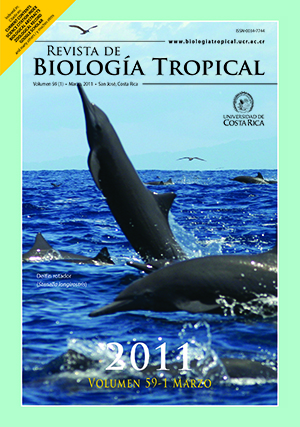Abstract
Determining quality of food ingested and digestibility can be helpful in understanding the mechanisms that determine trophic plasticity, which is the ability of a given species to use a more advantageous food source at a given time. In this study, the chemical composition and digestibility of food ingested by various trophic fish groups at different sites of the Upper River Paraná floodplain are evaluated. Specimens of Pseudoplatystoma corruscans, Prochilodus lineatus, Leporinus friderici, Pterodoras granulosus and Schizodon borellii from the Baía, Ivinheima and Paraná Rivers and from Fechada and Ventura Lagoons were taken as samples (3-16cm-mesh net). Volume participation analyses of food items were determined and contents from the stomach and the intestine?s latter quarter were removed for bromatological analysis (energy, crude protein, ash and dry matter). Internal marker acid-insoluble ash was employed for apparent digestibility coefficients. P. lineatus and P. corruscans had an intake with lower and higher energy and crude protein contents, respectively. P. corruscans had slight variations in food items and composition, whereas P. granulosus had the greatest variation. Whereas P. lineatus had the highest apparent digestibility coefficients in energy, S. borellii showed least variation in diet. P. granulosus and P. lineatus had the higher percentages of dry matter in the stomach in the Paraná River, whereas P. corruscans had similar use in the Baía Rivers and Ventura Lagoon. S. borellii showed low utilization of germanous energy. It may be concluded that the site determined the variation in quality and use of diet by L. friderici, P. granulosus and S. borellii. The generalist species L. friderici demonstrated a good use of different food items ingested at the site; likewise, the generalist species P. corruscans had a similar diet and the same use of food. Rev. Biol. Trop. 59 (1): 85-101. Epub 2011 March 01.##plugins.facebook.comentarios##

This work is licensed under a Creative Commons Attribution 4.0 International License.
Copyright (c) 2011 Revista de Biología Tropical
Downloads
Download data is not yet available.


